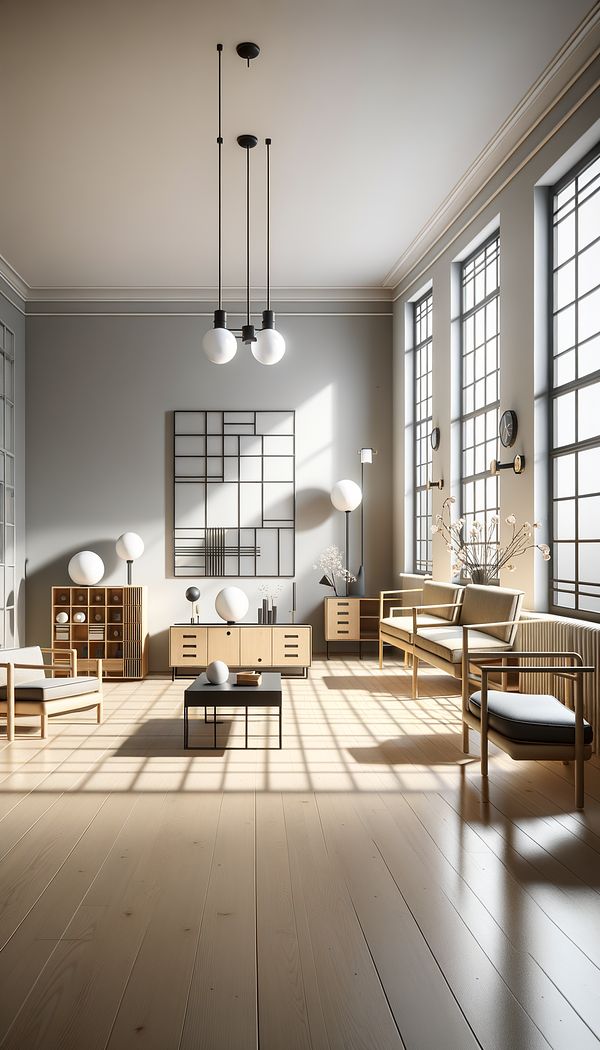What is Bauhaus?
Bauhaus is a design movement that originated in Germany, emphasizing functionality, simplicity, and the use of modern materials.
Description
Bauhaus is more than just a design term; it's a historic movement that significantly influenced architecture, art, and interior design throughout the 20th century and beyond. Originating in Germany in 1919, the Bauhaus school was founded by Walter Gropius with the aim of marrying the aesthetics of design with mass production, ultimately making good design accessible to all. The core principles of Bauhaus design include functionality, simplicity, and a focus on modern materials such as steel, glass, and concrete.
The Bauhaus movement encouraged the blending of crafts and fine arts, prioritizing the need for objects and spaces to be functional and economically viable without sacrificing aesthetic appeal. This holistic approach led to innovative designs in furniture, textiles, and buildings that remain influential today. Bauhaus interior design emphasizes clean lines, minimal ornamentation, and a restrained color palette, often featuring primary colors alongside black, white, and gray. The incorporation of modern materials and technologies was also a hallmark of the movement, reflecting its forward-thinking ethos.
Despite the political and aesthetic controversies that eventually led to its closure in 1933, the legacy of the Bauhaus continues to resonate in contemporary design. Its teachings and philosophies have been disseminated worldwide, shaping the pedagogy of design schools and influencing the practice of countless architects, designers, and artists.
Usage
In interior design, Bauhaus influences can be seen in minimalist spaces that prioritize functionality and simplicity. Furniture pieces, such as Marcel Breuer's Wassily Chair or the Bauhaus Lamp, iconic for their use of steel tubing and innovative construction, are direct outcomes of Bauhaus principles. These items, alongside the movement’s influence on modular furniture, industrial design, and modernist architecture, showcase how Bauhaus continues to inform and inspire design choices in contemporary living and work spaces.
FAQs
-
When was the Bauhaus movement founded?
The Bauhaus movement was founded in 1919 in Germany by Walter Gropius.
-
What are the core principles of Bauhaus design?
The core principles include functionality, simplicity, and the use of modern materials like steel, glass, and concrete.
-
How did Bauhaus design influence modern interior design?
Bauhaus design has influenced modern interior design by promoting minimalism, the use of new materials and technologies, and the integration of form and function. Its legacy is evident in contemporary furniture, architecture, and design education.
-
Why did the Bauhaus school close?
The Bauhaus school closed in 1933 due to political pressure from the Nazi regime, which opposed its philosophies and aesthetics.
Practical Application
When applying Bauhaus principles to interior design, focus on creating functional, simple spaces with a minimal use of decoration. Utilize modern materials and technologies to achieve innovative and practical solutions. Consider incorporating iconic Bauhaus furniture and lighting for an authentic touch of the movement’s enduring style. Embrace a restrained color palette, featuring primary colors to accent neutral tones, and prioritize the efficiency and utility of each design element.
-
Design Styles478 articles
-
Materials & Textiles360 articles
-
Furniture Types599 articles
-
Lighting111 articles
-
Decorative Techniques322 articles
-
Tight SeatA tight seat is a style of upholstery where the seat cushion is built directly into the chair or sofa frame.
-
Channel BackA channel back is a type of upholstery design characterized by vertical grooves or channels.
-
Split Queen BoxSplit Queen Box refers to a type of bed base composed of two separate pieces designed to support a queen-sized mattress.
-
Block FootBlock Foot is a type of foot design used in furniture.
-
Sussex ChairA Sussex Chair is a type of wooden armchair traditionally made from elm or beech.
